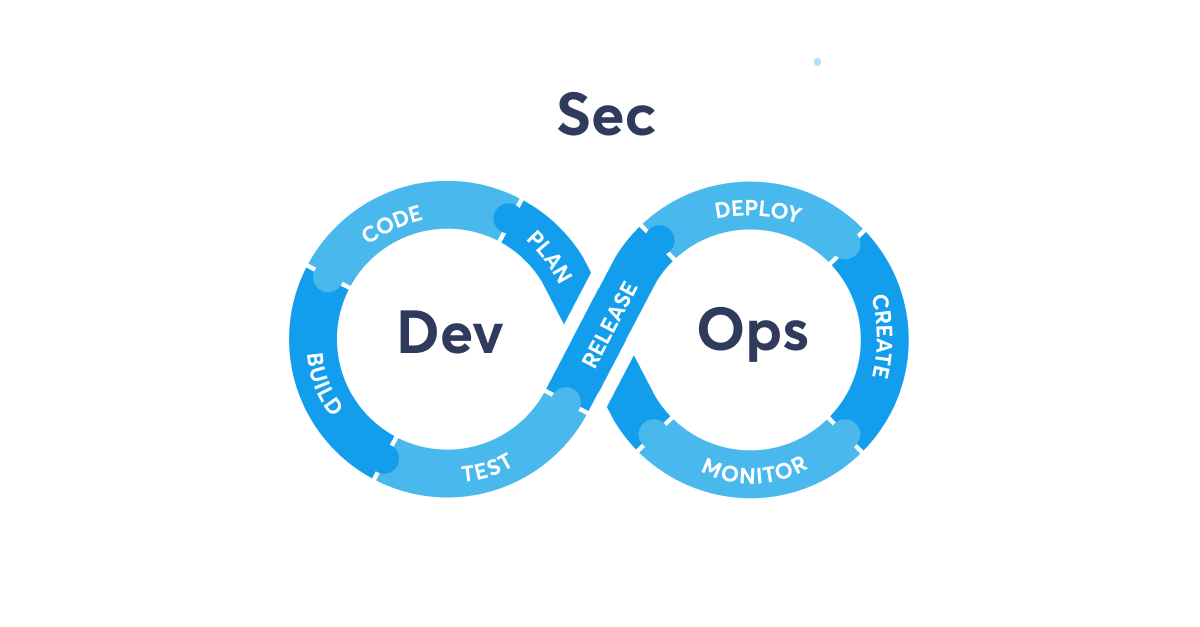If the last decade has taught us anything, it’s that security is vital. Vital for all businesses and organizations. The DevSecOps adoption has led to a significant and vital transformation within the computing world and has introduced a wide variety of benefits to such organizations.
This post is going to look at everything you need to know about DevSecOps, the benefits of adopting such a model and why it is vital to businesses.
DevSecOps vs DevOps
DevOps is a set of processes and tools combining software development and IT operations. DevSecOps is an extension of that. It stands for development, security, and operations. It classifies an approach to culture, automation and platform design that integrates security as a shared responsibility throughout the entire IT lifecycle. It automatically integrates security at every phase of the software development lifecycle which in turn enables the development of secure software quickly.
DevSecOps is the natural and evolved way of approaching security for many organizations. In the past, we have seen security just thrown onto software at the very end of the development cycle. It was treated almost as an afterthought. However, as time has gone on, we have realized the importance of such security, and DevSecOps integrates application and infrastructure seamlessly into processes and tools. This is the key difference between DevOps and DevSecOps. DevSecOps means thinking about security from the start, not at the end.
The DevSecOps methodology
A practical DevSecOps approach includes a combination of six major components. These include:
- Code analysis – This enables rapid identification of any vulnerabilities throughout the process. The code is analyzed in small chunks.
- Change management – This allows users to submit changes and determine the impact of such change. This increases the speed and efficiency of the process.
- Threat investigation – This means users can identify any potential emerging threats and accompany each code update. This allows users to identify and rectify threats as early and quickly as possible, streamlining internal processes.
- Vulnerability assessment – This covers the analysis of new security threats, and the response organizations will take to overcome them.
- Monitoring compliance – Making sure organizations stay compliant with regulations such as the General Data Protection Regulation (GDPR) and Payment Card Industry Digital Security Standard (PCI DSS) is super important. Monitoring these helps keep on top of compliance.
- Security training – This means that organizations will train all software and IT staff in security-related training, equipping them with the best possible guidelines and internal processes.
Benefits of adopting a DevSecOps approach
There are many benefits of adopting a DevSecOps approach. The main two are speed and security.
“The purpose and intent of DevSecOps is to build on the mindset that everyone is responsible for security with the goal of safely distributing security decisions at speed and scale to those who hold the highest level of context without sacrificing the safety required,” says Shannon Lietz, co-author of the DevSecOps Manifesto.
The first benefit is rapid and cost-effective software delivery. Software applications developed outside of a DevSecOps environment run the risk of security issues which can lead to huge time delays in output. Fixing codes and security issues are very complex jobs and can only be completed by specialists. Even then, fixing these issues can be very time-consuming and expensive. Using DevSecOps ensures rapid and secure delivery, saving time and cutting costs where possible, as the need to repeat processes is reduced. This results in the most efficient and cost-effective development.
Another benefit of adopting a DevSecOps approach is improved and proactive security. DevSecOps, as mentioned, prioritizes security from the start of the development cycle. Codes are continually reviewed, audited, and tested for any and all security issues. As soon as they are identified, they are addressed and rectified, streamlining internal processes. Being proactive with security issues from the start means that they are immediately less expensive and quicker to fix. A DevSecOps approach also allows better collaboration between internal teams such as development, security, and operations. It allows the quality of software development to increase and for all teams to be on the same page with quality and turnaround time.
Another benefit is that automation is compatible with modern development. Cyber security testing can be integrated into an automated test suite for operations teams.
Most importantly, a DevSecOps approach is a repeatable and adaptive process. As businesses grow and mature, so does their need for security measures. DevSecOps allows constant change and requirements for any organization and environment. It is vital for businesses to treat security as a priority and adopting a DevSecOps approach should be part of their development process.
How to Implement DevSecOps
Implementing a DevSecOps strategy is not simple but can be done with effective and extensive planning.
These are the three key steps to consider when implementing DevSecOps:
- Assessment of current security measures – organizations should perform threat modeling and conduct extensive risk assessments which help them analyze the effectiveness of their current assets and their likely threats. This will help them prioritize the modifications needed when implementing DevSecOps.
- Merging security into DevSecOps – integrating current security measures into the development process of DevSecOps will result in fewer disturbances and ensure a smooth and streamlined implementation.
- Implementation is considered complete when all teams are committed to working together and embedding security processes into the entire workflow. Collaboration and understanding are super important to making this work.
The best way to get started is to engage with a company that has the knowledge and experience ready to help your business adopt a DevSecOps approach.
DevSecOps Best Practices
In order to get the most out of DevSecOps and to make sure it runs as smooth as possible, here are a few best practices you can follow:
- Automation: DevOps is about the speed of delivery, whereas DevSecOps incorporates those all-important automated security controls and tests early on in the development cycle. This ensures you can have fast and safe delivery of your applications.
- Efficiency: DevSecOps adds security to your workflows. Using tools that scan code as you write it means you can identify security issues early and rectify them as efficiently as possible.
- Threat Modeling: Doing so can help you identify vulnerabilities of your assets and spot any gaps for security controls. You can build necessary protection alongside the development, meaning faster and more secure turnaround time for organizations.
Why do you need DevSecOps?
The IT infrastructure landscape has changed tremendously over the past decade. The shift to agile cloud computing platforms and shared storage data has introduced many benefits to organizations all over the world, who are looking to thrive and grow through advanced applications.
DevOps applications may have speed, scale, and functionality, but often lack robust security and compliance. Therefore, DevSecOps was introduced to bring development, operations, AND security under one roof.
Ensuring security is an equal priority in the development cycle is a must-have. Integrating DevSecOps means security is at the forefront at all times and internal teams have better collaboration and streamlined ways of working.
Looking to integrate DevSecOps into your development process? You’d eliminate threats from the outset. Request a consultation and let us know you’re looking to implement DevSecOps!






